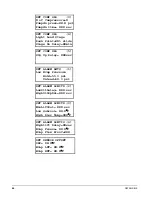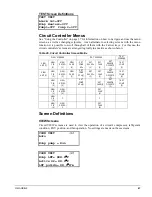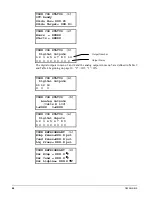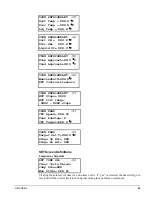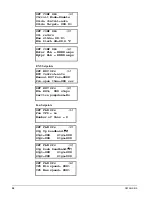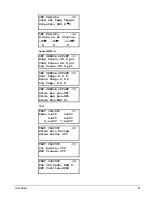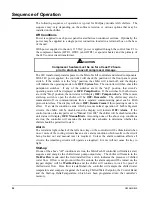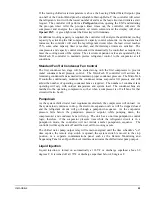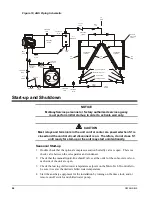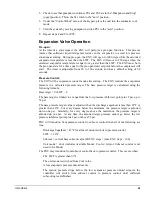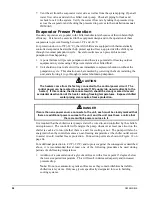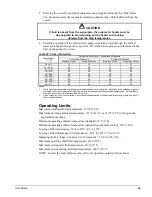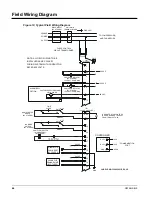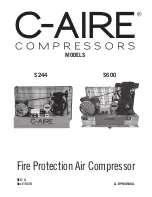
60
OM
AGSB-5
Refrigerant Charging
Why does the AGS flooded evaporator use subcooling control?
Subcool control maintains proper evaporator level for efficiency and is the most stable value with
which to control the flooded evaporator chiller. Discharge superheat control is affected by many
variables such as motor heat, refrigerant flow, number of fans operating, amount of refrigerant in the
oil, etc,. Additionally the chiller cannot be controlled by the traditional suction superheat control
due to the saturated refrigerant entering the suction cooled motor. Often this is a heavily saturated
vapor which helps cool the motor and is not a useful value to control to.
Do not use the evaporator sight glasses to charge the unit.
Use these sight glasses for reference only. On some of the first evaporators the sight glasses are not
in the correct location for charge level indication. The expansion valve control varies with operating
conditions and may cause a higher or lower level based on control decisions. You can use the sight
glasses to give you some relative decision making information. If there is a considerable amount of
oil out in the system, you may see oil floating on the evaporator liquid level and/or oil smearing on
the sight glass as the liquid level rises and falls.
Discharge Superheat
The most important value to monitor while setting the charge on a flooded evaporator AGS chiller is
the discharge superheat, and especially at full load. Between 20° and 22° DSH the compressor will
hold its slide target and will not load up. If the DSH drops below 20° then it will unload. Excessive
refrigerant charge, excessive oil, a large amount of oil in circulation and a leaking or over feeding
evaporator solenoid valve will all cause low discharge superheat.
Approaches:
When oil gets out into the system it will affect the condenser and evaporator approaches. The
design approach on the condenser at full load is approximately 35°. The Evaporator approach
should be 3-10°, depending on conditions and percent of glycol.
Oil In Evaporator:
If there is oil in the evaporator, it will float on the liquid level and get pulled out with suction gas,
carrying liquid refrigerant with it and reducing you discharge superheat. The goal is to keep the
discharge superheat above 22° and ideally 35°, while trying to get the compressor loaded up. The
higher the refrigerant flow, the quicker the oil will be recovered.
Evaporator Oil Return Line:
In some applications we have seen that the evaporator oil return line causes low discharge superheat
and some oil loss in to the system. It may be necessary to reduce the flow through the evaporator oil
return line by closing down the ball valve some. This may help maintain oil in the oil separator and
keep higher DSH, if it is overfeeding and dropping the DSH too much. In F code, the minimum
superheat the circuit will allow the solenoid to energize is moved from 22° to 35° DSH to help
ensure that it does not cause issues with limiting the compressor with low discharge superheat or
cause oil loss. One thing to keep in mind is that most of your oil recovery is done through carry
over through the suction line. The evaporator oil return line is used more effectively for discharge
temperature control, and a by product is we will recover some small percentage of oil.
Summary of Contents for AGS 206A
Page 65: ......

